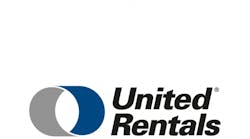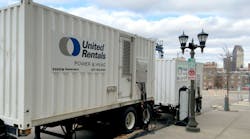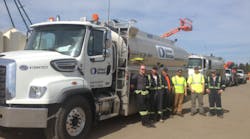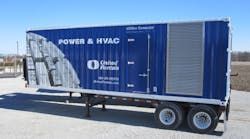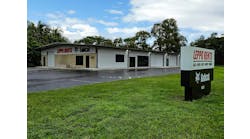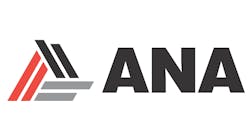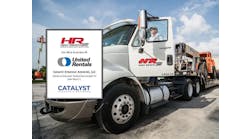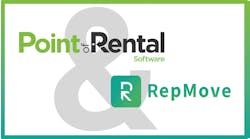United Rentals’ Kneeland Optimistic with NES Acquisition, Plans Increased Capex
United Rentals CEO Michael Kneeland called the company’s strategic rationale in acquiring NES Rental “compelling” during a conference call with investors following the company’s announcement of the acquisition and United’s fourth quarter and year-end results. Kneeland also said increasing demand from a variety of segments have inspired the company to increase CapEx by $200 million in 2017.
“NES has extensive relationships with local and strategic accounts,” said Kneeland. “This will help diversify our customer base and fits nicely with our go-to-market strategy. It should also accelerate the cross selling of our services including our specialty fleet. And the timing is ideal to take advantage of an expanding marketplace. We’ve also identified meaningful synergies that will be pursuing to integration. So this investment can be characterized as the right assets, right timing, right people, right place and the right price.”
In reviewing 2016, Kneeland said the company performed well considering the headwinds United faced, such as global economic concerns in the first quarter and then ongoing problems such as upstream oil and gas softness, a weak Canadian economy especially in Alberta and rental industry over-fleeting.
“Despite these constraints, we exceeded the upper band of our guidance on total revenue, adjusted EBITDA, and free cash flow,” Kneeland said. “In fact, the $1.18 billion of free cash flow we generated was a record for us. Our results in 2016 were driven by a combination of positive internal and external dynamics. The internal push came in a large part from our strategic approach to business development. For example, we signed new customers and targeted verticals. We grew our specialty operations and employed a surgical use of CapEx to expand our fleet, all while maintaining cost discipline. The external pool came from broad-based demand across geographies and project types led by commercial construction.”
Kneeland talked about four factors he saw as favorable to United Rentals’ prospects in 2017.
“First, there are number of favorable U.S. indicators of 2017, including the Dodge construction outlook, contractor backlogs, national surveys by key trade groups, and importantly CEO confidence surveys. These are the people making spending decisions to create jobs for our customers. IHS, our industry’s primary forecasting firm, projects 3 percent to 4 percent growth for the U.S. rental industry this year. Second, there appears to be more of a balance between supply and demand. If rental companies continue to show discipline with CapEx spending, the absorption rate for excess fleet should accelerate. Until then, we expect to see more of our growth come from volume other than rate.
“Third, customer surveys in the quarter showed a positive trend. More than half of the respondents cited an improving outlook for 2017, while only 5 percent pointed to a declining outlook. And at the same time, U.S. consumers, home builders, and small businesses reported higher confidence levels in December. So there’s no disconnect here.
"And fourth, we have the benefit of almost 900 branches with connections to hundreds of local markets. This gives us an ongoing access that industries largest volume of empirical data, operating information and customer touch points. More immediately, our fourth quarter results reflected a healthy level of demand. We increased our average daily OEC on rate year-over-year in a majority of the states and provinces where we operate.”
Kneeland pointed to growing demand in the country’s coastal areas and the western states as additional causes for optimism.
“The coastal states continue to outpace the country as a whole,” he noted. “This is particularly true in the Southeast. Our double-digit revenue growth was driven by commercial construction of warehousing, data centers, and mixed use facilities. Further up the coast we’re on a casino project, power plants, as well as the major airport expansion. Out west, we saw nearly $7 billion of large multi-year projects start up in California last quarter, with Washington, Oregon, and Arizona expected to follow suit by March. These range from stadiums and transit projects to healthcare, solar, automotive, and corporate campuses. And we’re cautiously optimistic that Canada has turned the corner. The fourth quarter marked a first uptick in oil and gas activity in Canada since 2014.
“And GDP growth is expected to accelerate to 2 percent this year aided in part by the rebalanced commodity prices. Our specialty segment continued to outperform in the quarter, rental revenue for Trench, Power and Pump increased by approximately 5 percent, 17 percent and 10 percent respectively from the prior year. We opened a total of 14 specialty branches in 2016 and plan to open another 17 this year. As we said in our Investor Day, our long-term goal remains to grow our specialty business to $2 billion of revenue.
Kneeland said United will continue to increase investment in technology and CapEx. “We’ll be expanding our digital strategy and our total control fleet management software to create more of a competitive mode. And we’ll continue to explore new verticals that offer potential synergies with our existing customer base. This year we’ll spend about $200 million more of CapEx versus 2016 based on current operations in part to serve different types of customers and markets associated with these initiatives.”
United Rentals’ chief financial officer Bill Plummer added that the company expects growth in demand to continue in 2017.
“That’s one of the reasons why we put more CapEx into the plan for this year,” Plummer said. “We think that there’s genuine acceleration going out there from a demand perspective. How quickly that translates into top line growth and profitability growth is part of the question that we wrestle with at this time in the year.”
